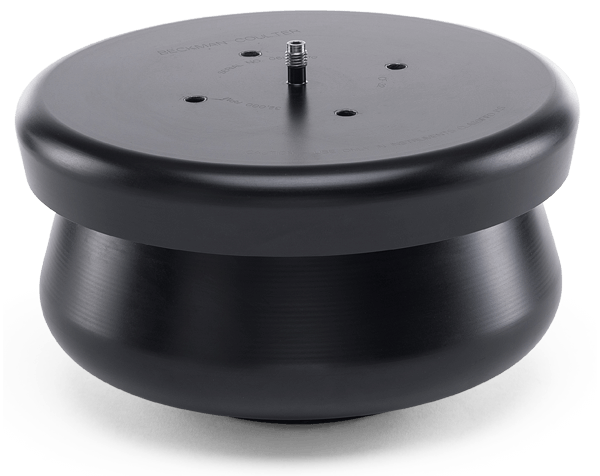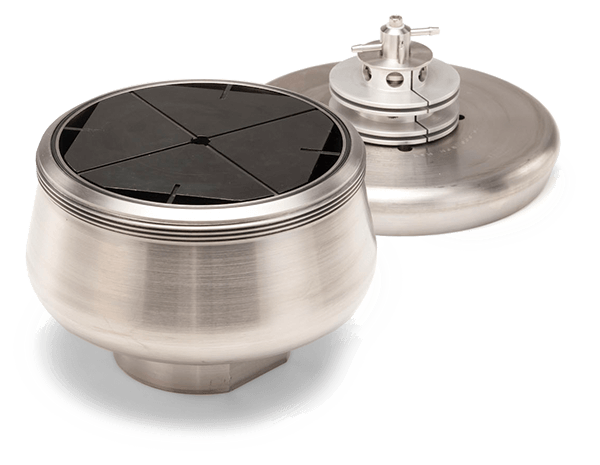Continuous Flow Centrifugation
Continuous flow centrifugation is a laboratory time-saver, whereby large volumes of material can be centrifuged at high centrifugal forces without the tedium of filling and decanting a lot of centrifuge tubes, or frequently starting and stopping the rotor.

When using a continuous flow rotor, you are either collecting a supernatant or scraping a pellet. Continuous flow rotors substantially minimize material processing time for 2 reasons:
- They have short pathlengths to reduce overall pelleting time. Hence, they efficiently pellet solids out of a sample stream and facilitate a rapid flow of material through the rotor.
- They have large capacities. Therefore, they do not need to start and stop as often as conventional rotors. This saves time by reducing sample handling and reducing the time lost in waiting for rotor acceleration/deceleration between runs.

Major applications for continuous flow rotors include:
- Large viruses
- Mitochondria
- Tissue homogenates
- Bacteria
- Cell harvest
- Algae harvest
It’s best to use a continuous flow rotor if:
- The sedimentation coefficient of the particles to be collected is greater than 50 S. Because the rotor has high pelleting efficiency, solid material can be separated from the liquid medium faster than with a swinging bucket or fixed-angle rotor.
- The sample solid/liquid ratio is low (5–15%). Above a solid/liquid ratio of 15%, the rotor tends to be over efficient, i.e., it pellets so quickly that it fills immediately. This means that it must be stopped for unloading the pellets so often that too much time is lost in accelerating/decelerating the rotor and cleaning it between runs. Conversely, if the sample contains little solid material, the rotor will operate for long periods, processing large volumes of material between shutdowns.

